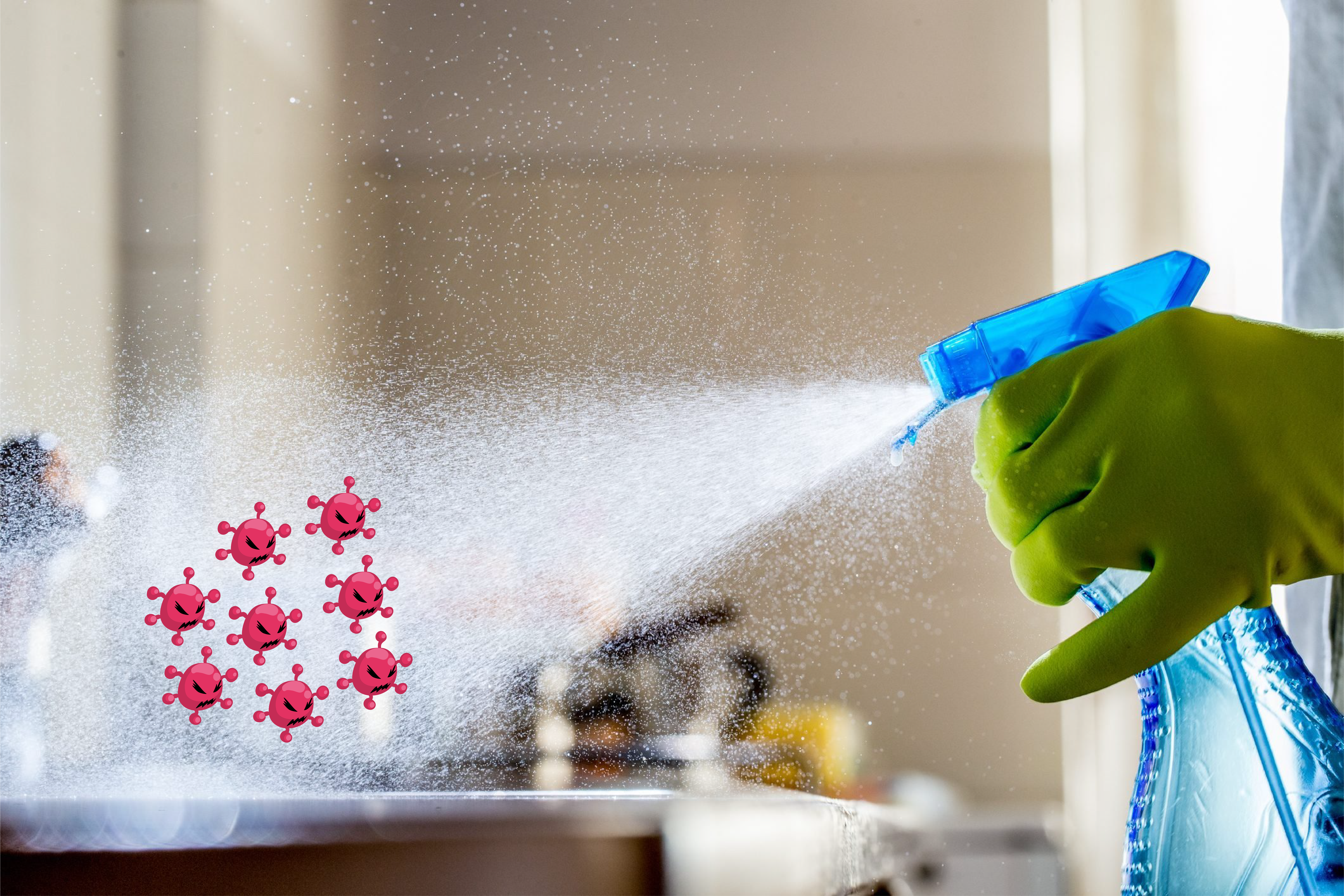The Hepatitis E virus (HEV) is the most common cause of acute viral hepatitis worldwide and mainly transmitted via the fecal-oral route and/or consumption of contaminated food products. As a quasi-enveloped virus, HEV circulates naked and/or unenveloped in bile and feces, while it is enveloped in the blood by a lipid bilayer. Immunocompetent individuals usually recover from HEV infections without symptomatology, but immunocompromised patients and others (i.e. pregnant woman) are at risk for chronic infections and fulminant hepatitis. Current therapeutic options against HEV are constrained to the off-label use of the broad-spectrum antiviral agent ribavirin (RBV). Unfortunately, RBV therapy is often limited due to adverse side effects. In addition, virus isolates with lower sensitivity to RBV have also been identified, leading to treatment failures. Consequently, transmission-based precautions are essential to limit HEV spread. Because HEV is not cultured efficiently, evidence-based hygiene guidelines and preventative measures are incomplete, and there is no information on HEV sensitivity to chemical disinfectants.
Many commonly used sanitizers contain alcohol-based disinfecting solutions. The German researchers from TWINCORE Centre for Experimental and Clinical Infection Research and Ruhr University Bochum therefore evaluated the ability of different alcohols to inactivate HEV using a newly described cell culture system. They found that HEV are highly resistant against different alcohols (1-propanol, 2-propanol and ethanol). In addition, four out of five commercially available and frequently used ethanol-based disinfectants, including formulations that were officially certified against enveloped and non-enveloped viruses, failed to effectively inactivate HEV. Based on biophysical analysis, we observed that, alcoholic components dissolve only the quasi-envelope structure of the virus, but leave the highly infectious naked HEV particles intact. In an unexpected finding, one of the disinfectants evaluated contained small amounts of phosphoric acid as a supplemental ingredient, which effectively inhibited HEV infection and could be used in novel formulations against HEV. These findings may be considered in the future to develop new hygiene measures and inactivation strategies to process contaminated food products and contain HEV outbreaks.
This study by Dr. Patrick Behrendt, Prof. Eike Steinmann and their colleagues was online published in Journal of Hepatology in January 2022. Publication link: https://www.sciencedirect.com/science/article/pii/S0168827822000198?via%3Dihub

